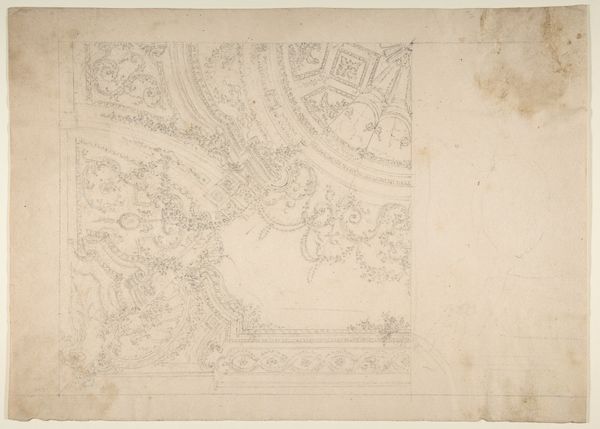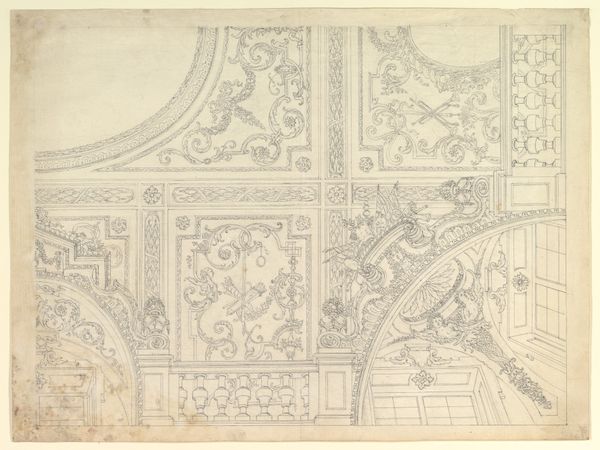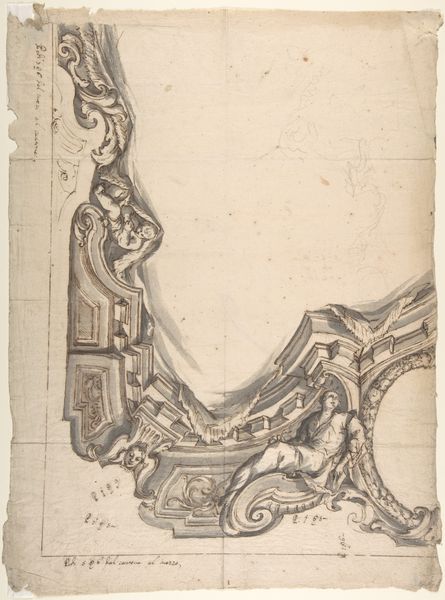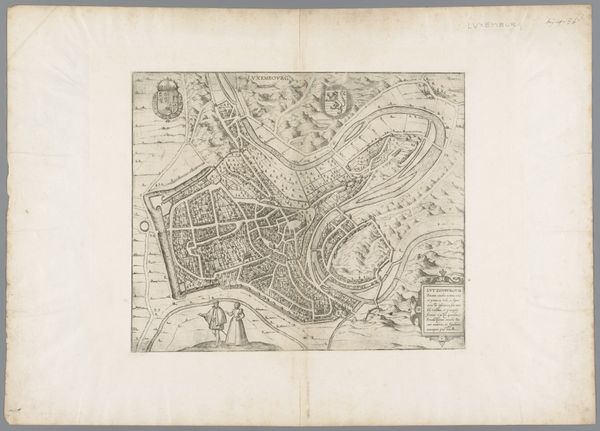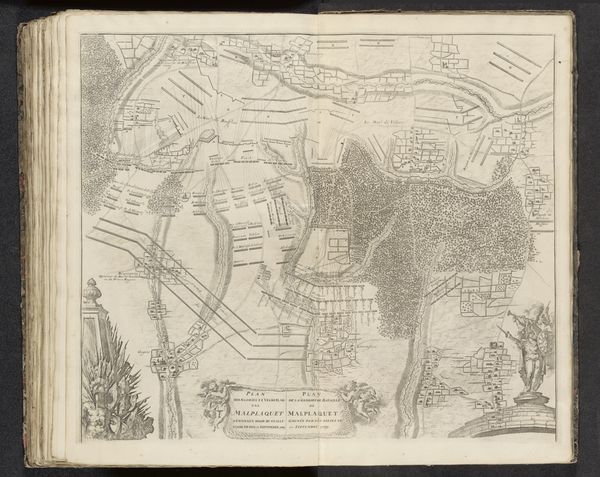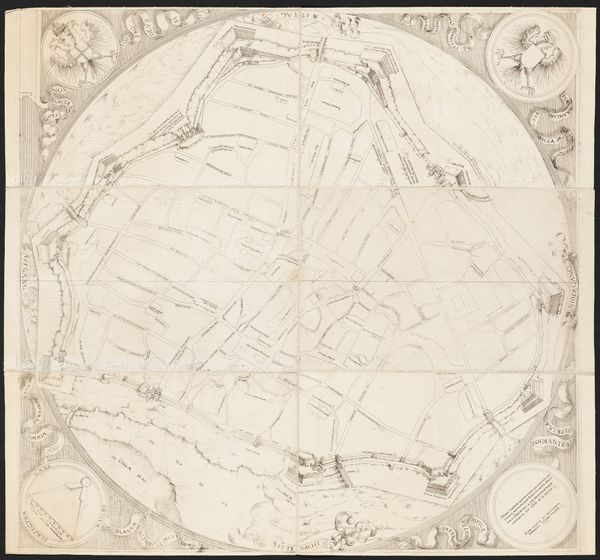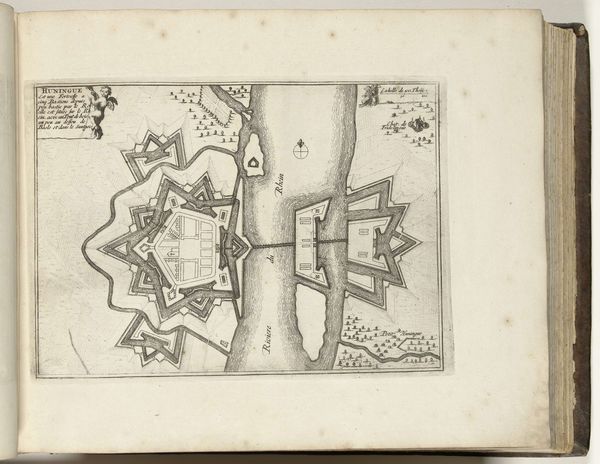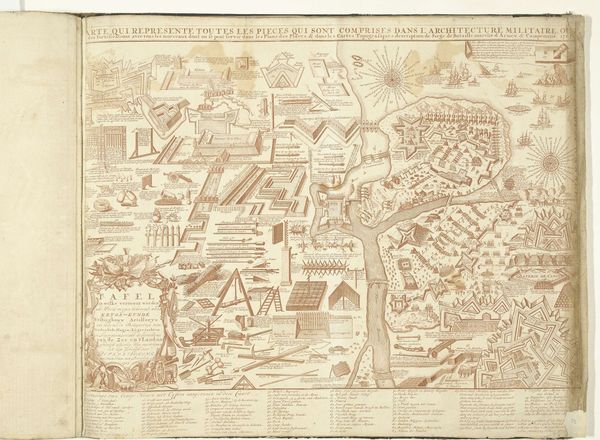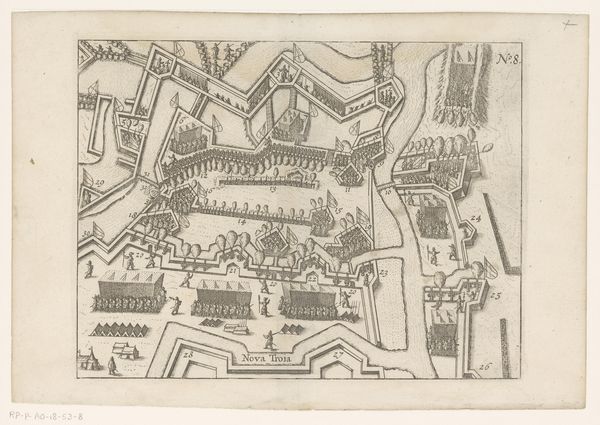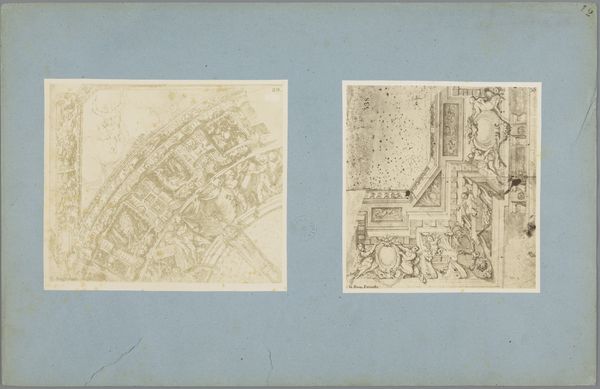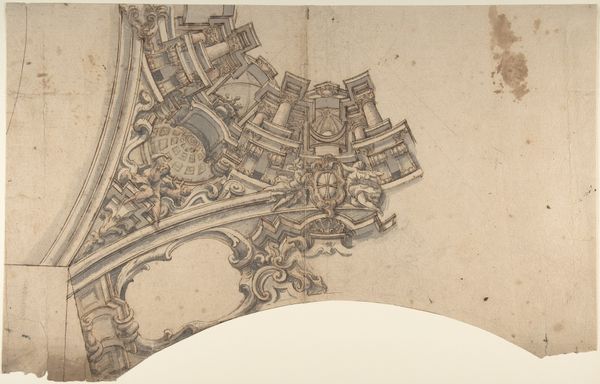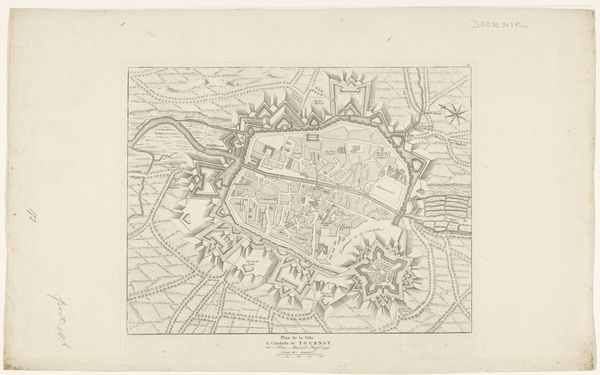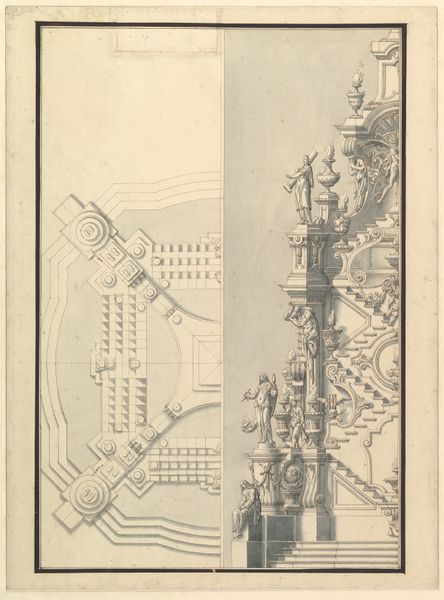
Halved Alternate Designs for a Painting Ceiling 1700 - 1780
0:00
0:00
drawing, print, etching
#
drawing
#
baroque
# print
#
etching
#
etching
Dimensions: 17 5/8 x 15 9/16 in. (44.8 x 39.6 cm)
Copyright: Public Domain
Curator: Up next we have “Halved Alternate Designs for a Painting Ceiling,” an etching by Leonardo Marini, placing it within the Baroque era, around 1700 to 1780. Editor: My first impression is the sheer meticulousness of the linework. Look at all the detail; it must have taken the engraver countless hours just to get these ornate, flowing designs. Curator: Absolutely, and consider where these ceilings would be placed: palaces, churches, spaces of power. It speaks to the grand ambitions and the institutions that commissioned them. This wasn’t just decoration, it was about making a statement. Editor: Right, it's a statement of wealth, skill, and perhaps a suppression of the workers who produced these highly skilled artworks. Imagine the intense labor necessary. The act of reproduction, turning it from a unique drawing to potentially mass-produced prints is worth considering. How many ceilings never actually saw the light of day? Curator: That's a thought-provoking point! It does raise questions about access to art and who got to experience such grandeur. This print allows us to contemplate the process and the world of 18th-century art production and consumption. The market dictated the material's use, in effect. Editor: The texture created through the etching process really makes you appreciate the physicality involved. From the plate-making to the pressing, each print becomes a unique artifact documenting human intervention. I find myself thinking of it as a kind of early industrial design, prototypes and blueprints becoming artworks in their own right. Curator: Well, looking beyond the skill, for me, it’s an artifact documenting architectural aspirations that reflect Baroque-era politics. To create spaces that embody both divine authority and aristocratic power was essential, after all. Editor: Indeed, the tension between that high-minded purpose and the reality of labor exploitation makes it especially interesting. This ceiling plan, seemingly an emblem of high culture, when you break it down reveals how intimately artistic processes connect with complex questions about social context. Curator: Looking at Marini's etched drawing now, its historical importance appears with increased depth. Thank you! Editor: Thanks. I think the materiality tells as much a story as the art's intended audience and owner!
Comments
No comments
Be the first to comment and join the conversation on the ultimate creative platform.
